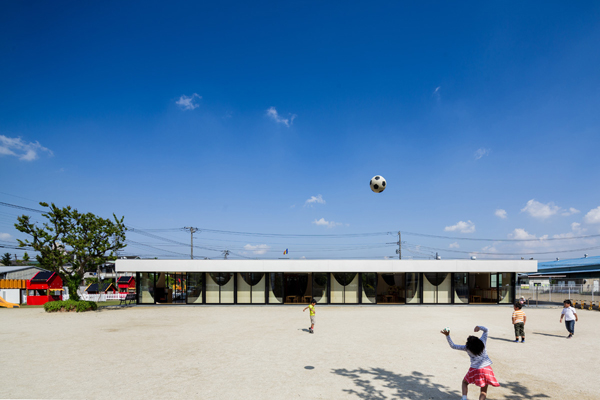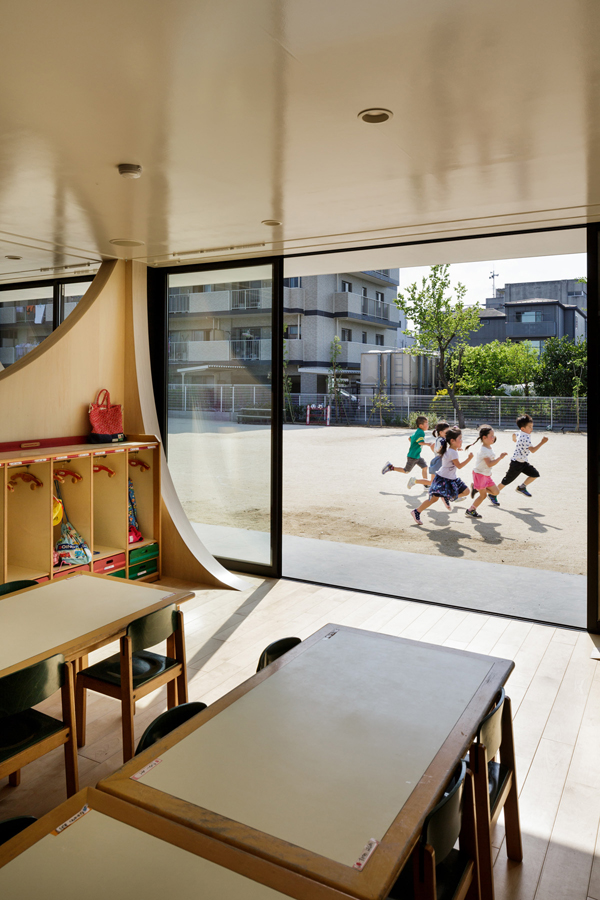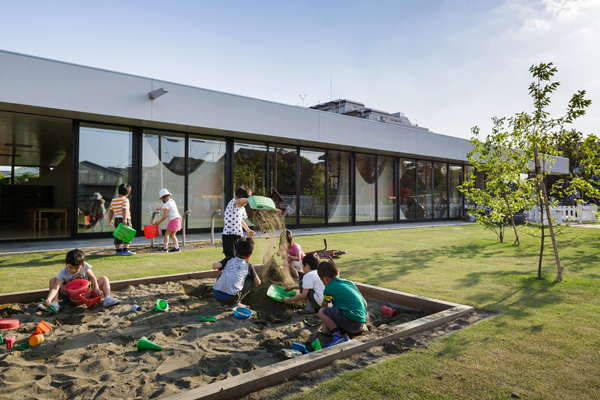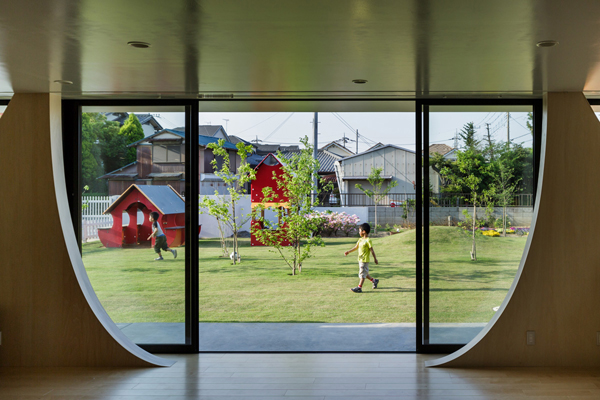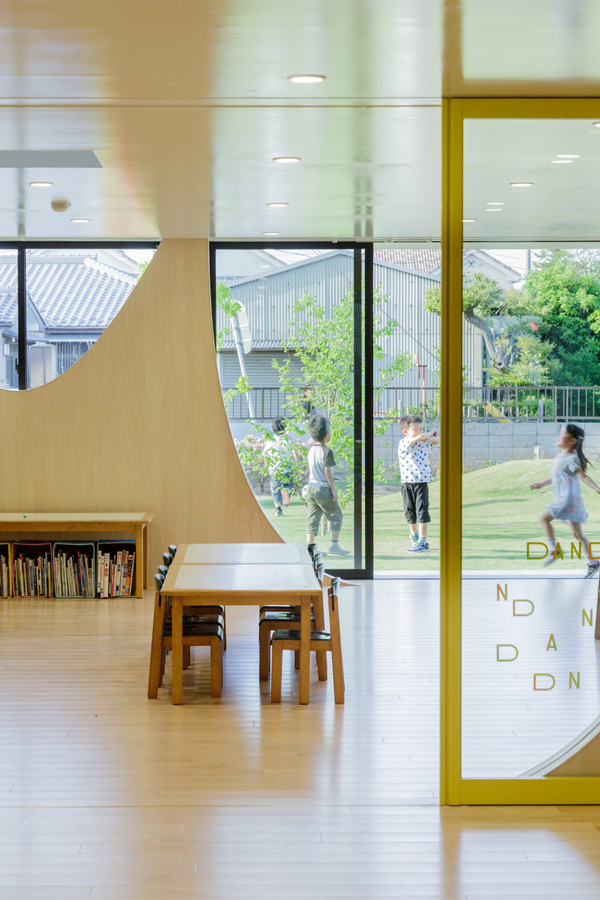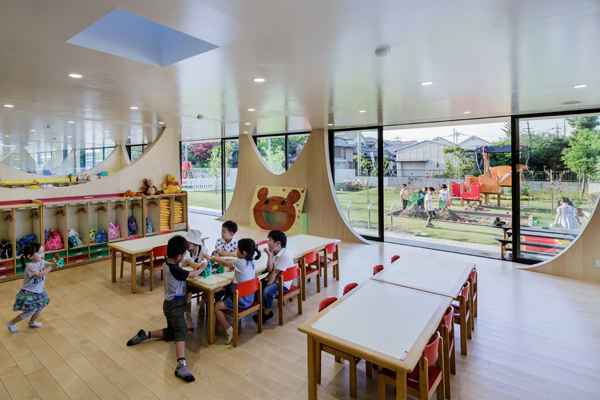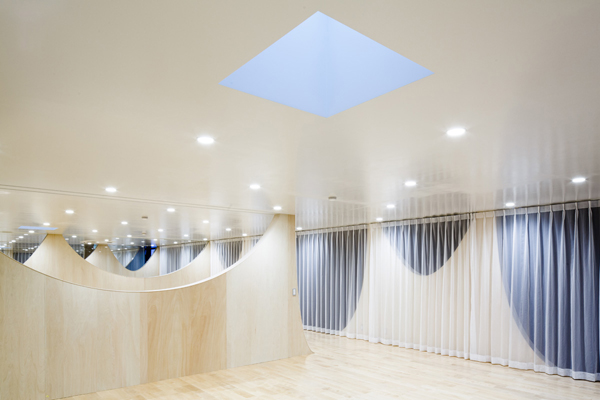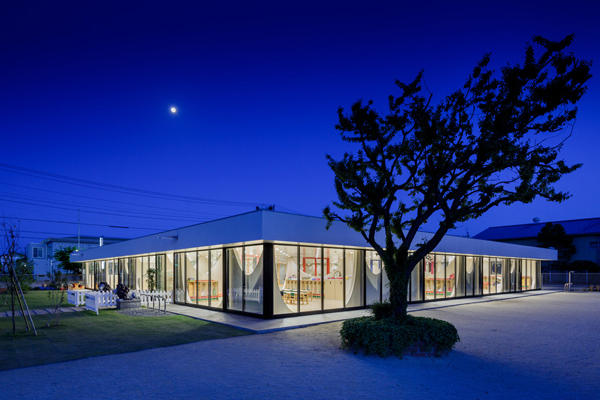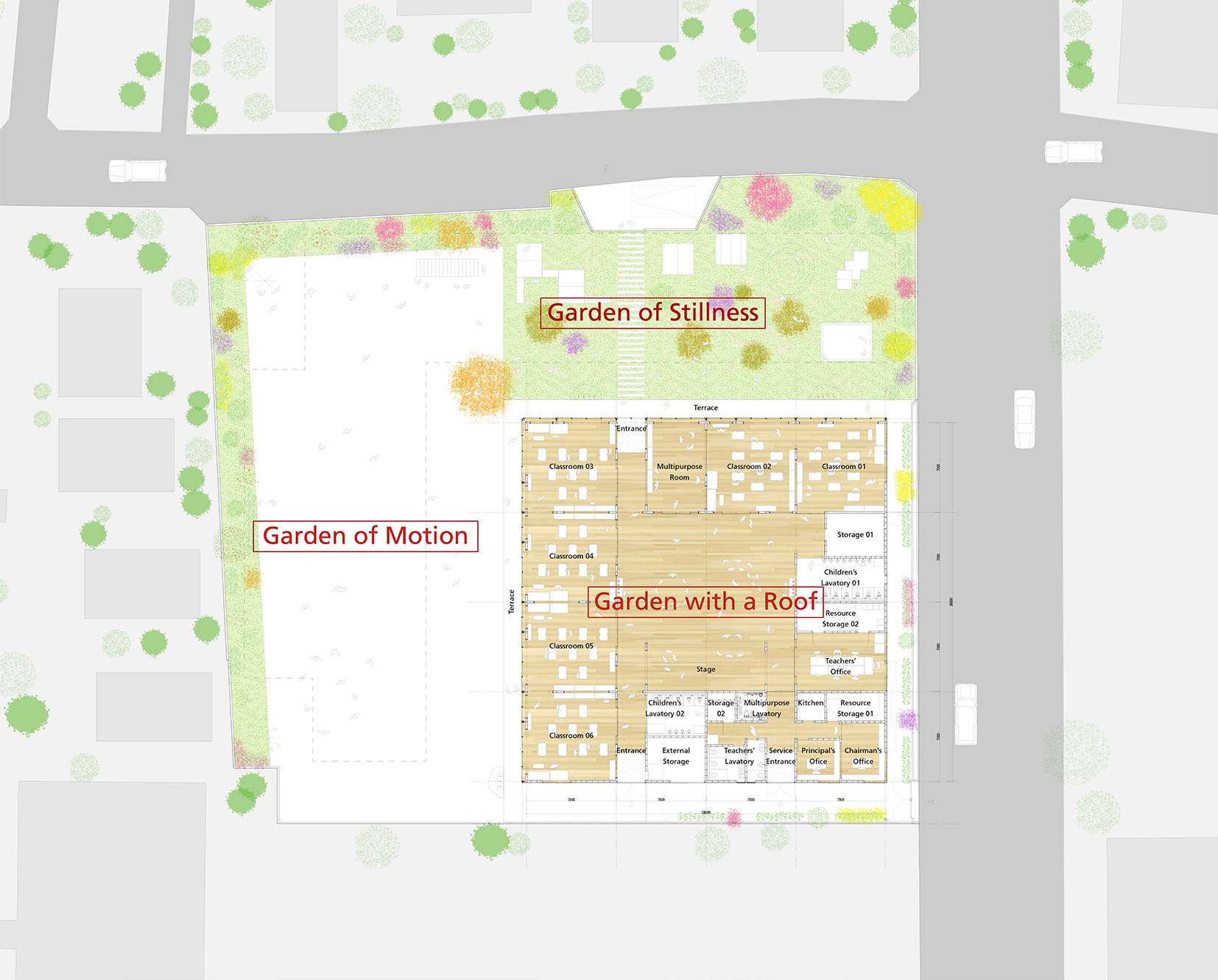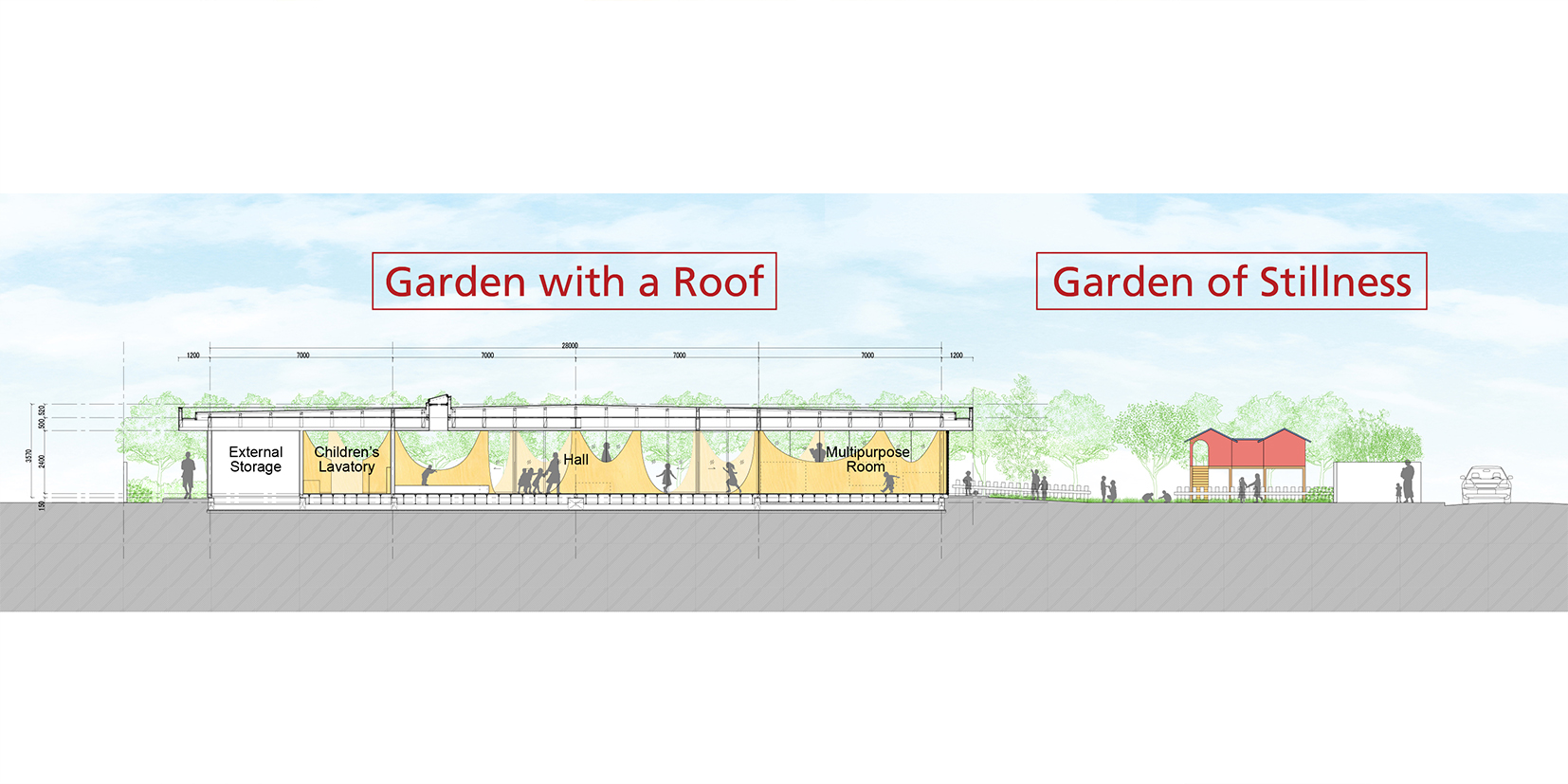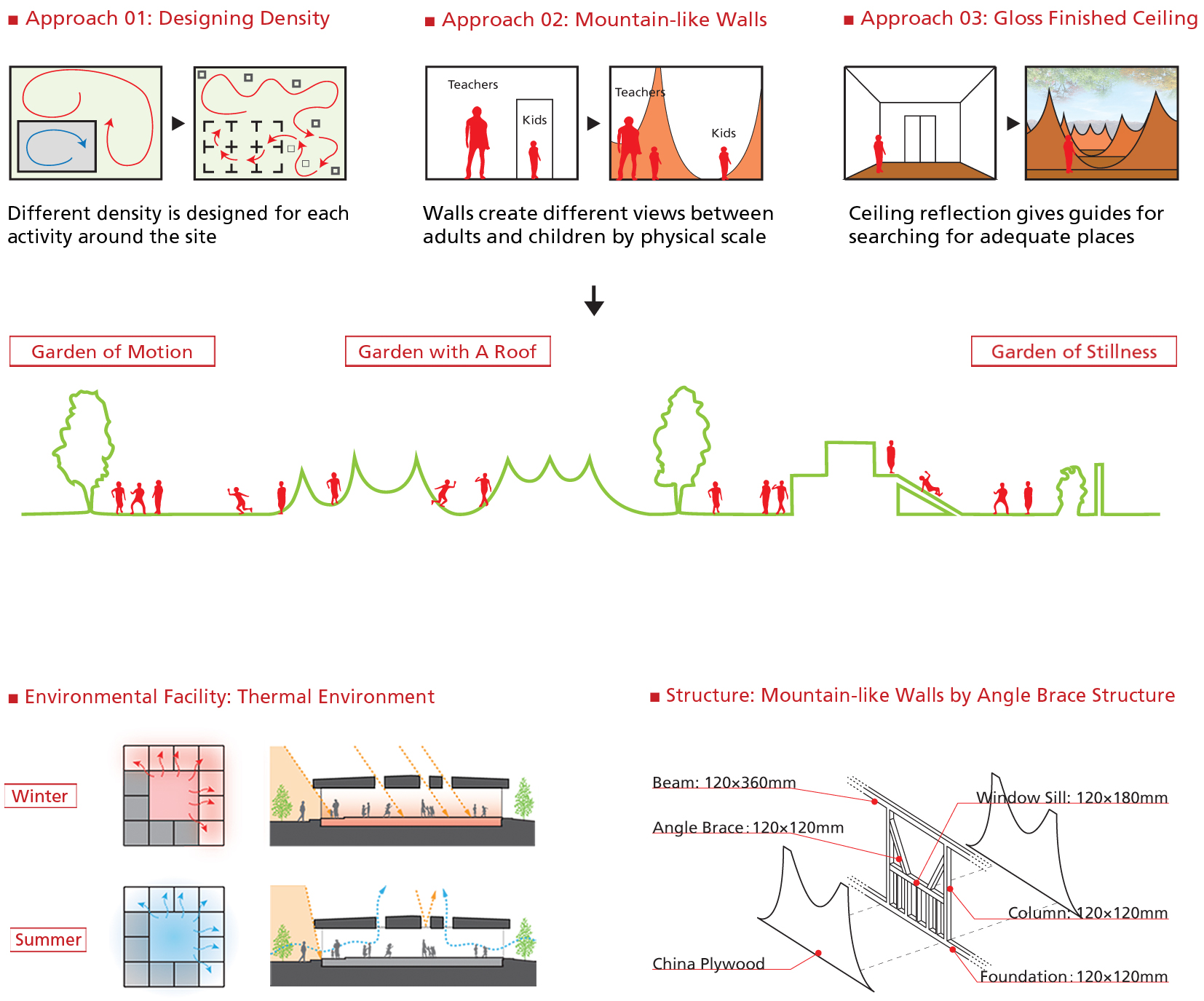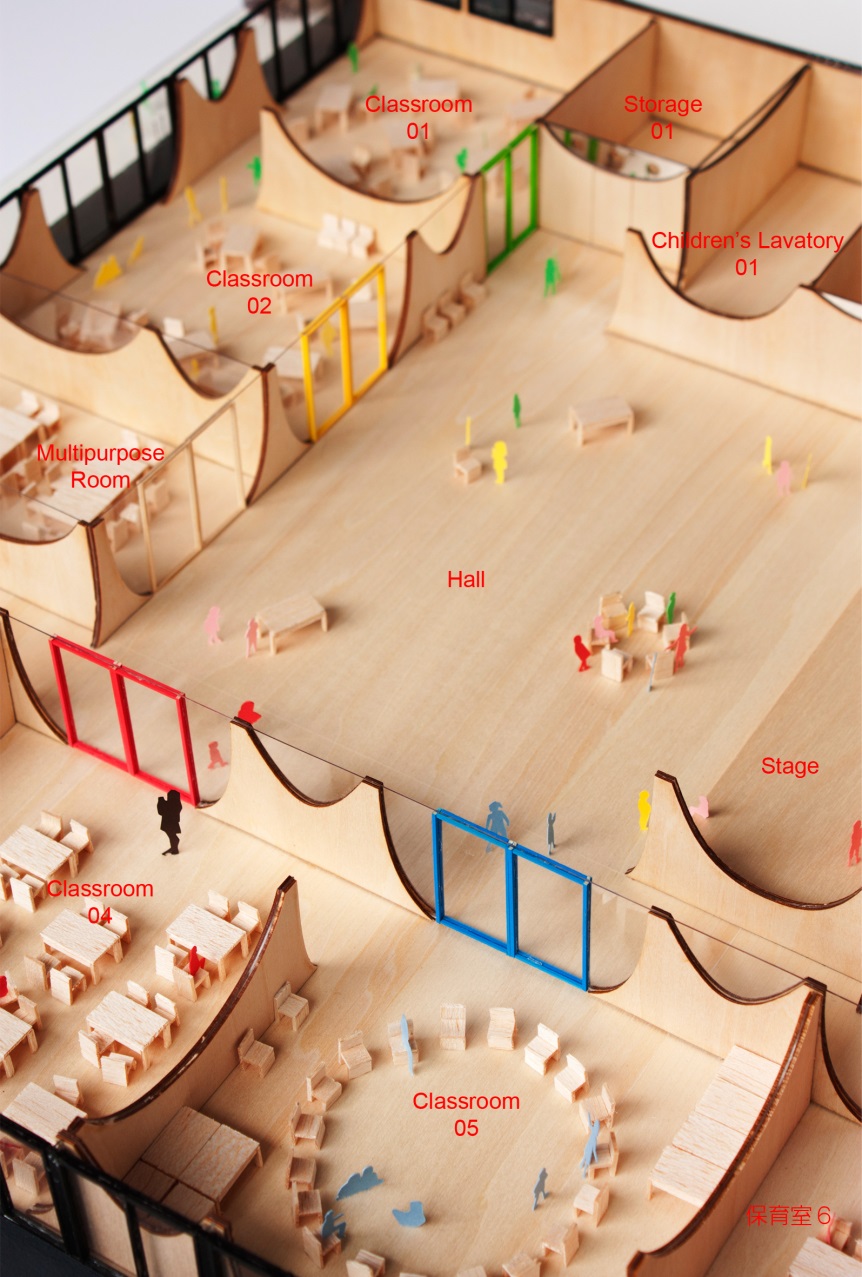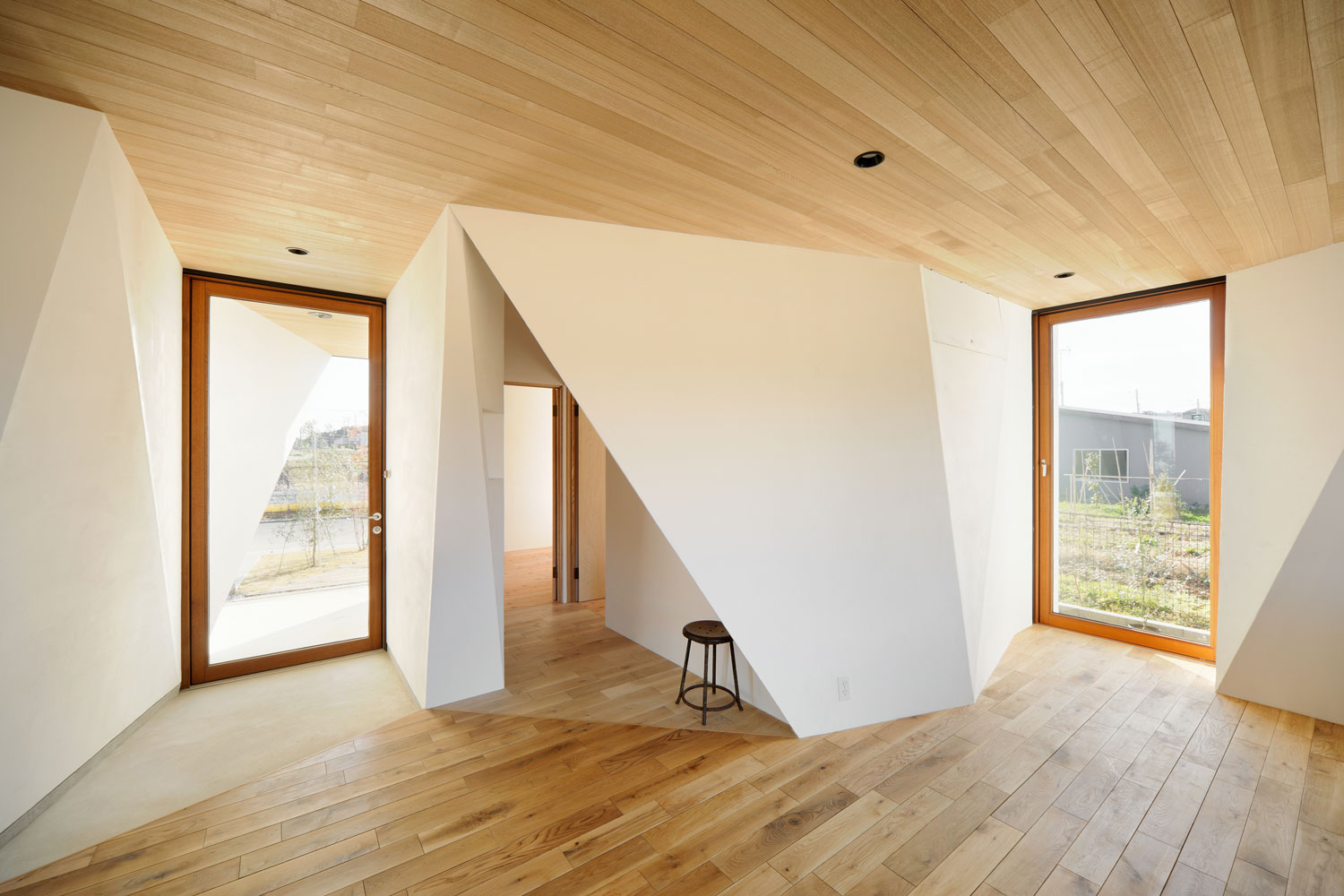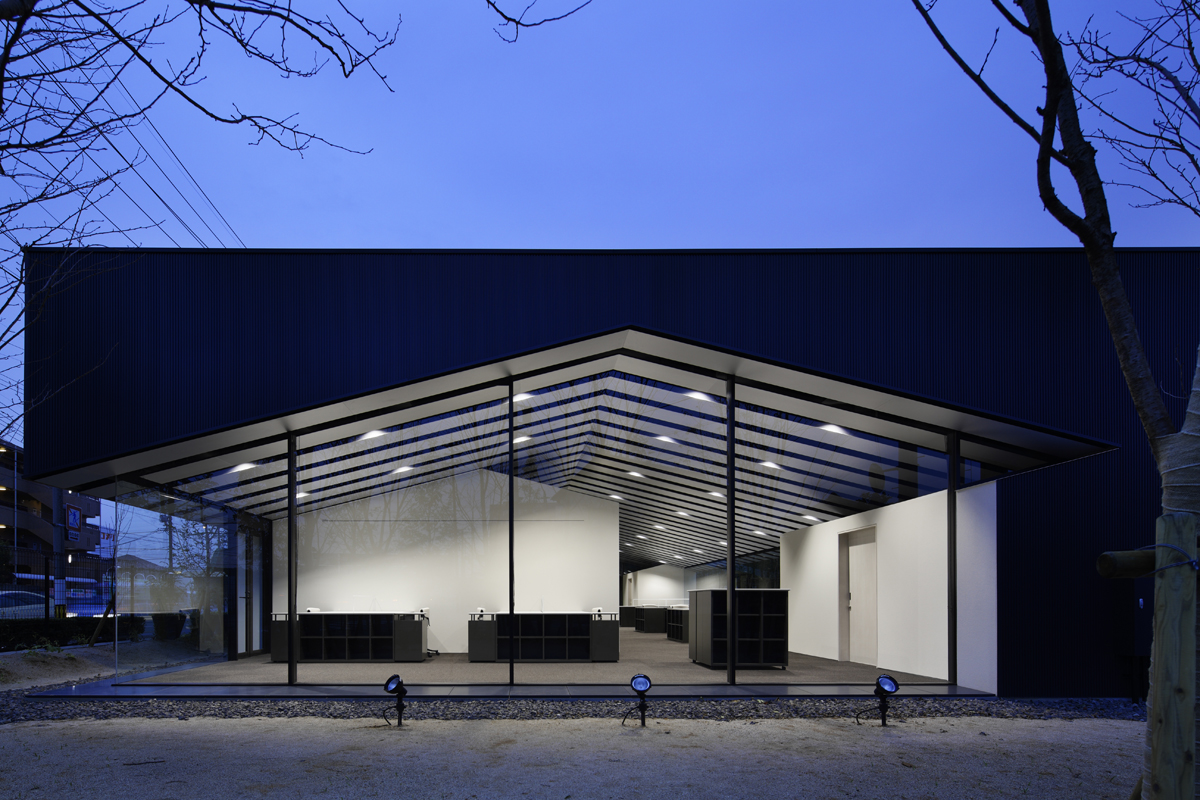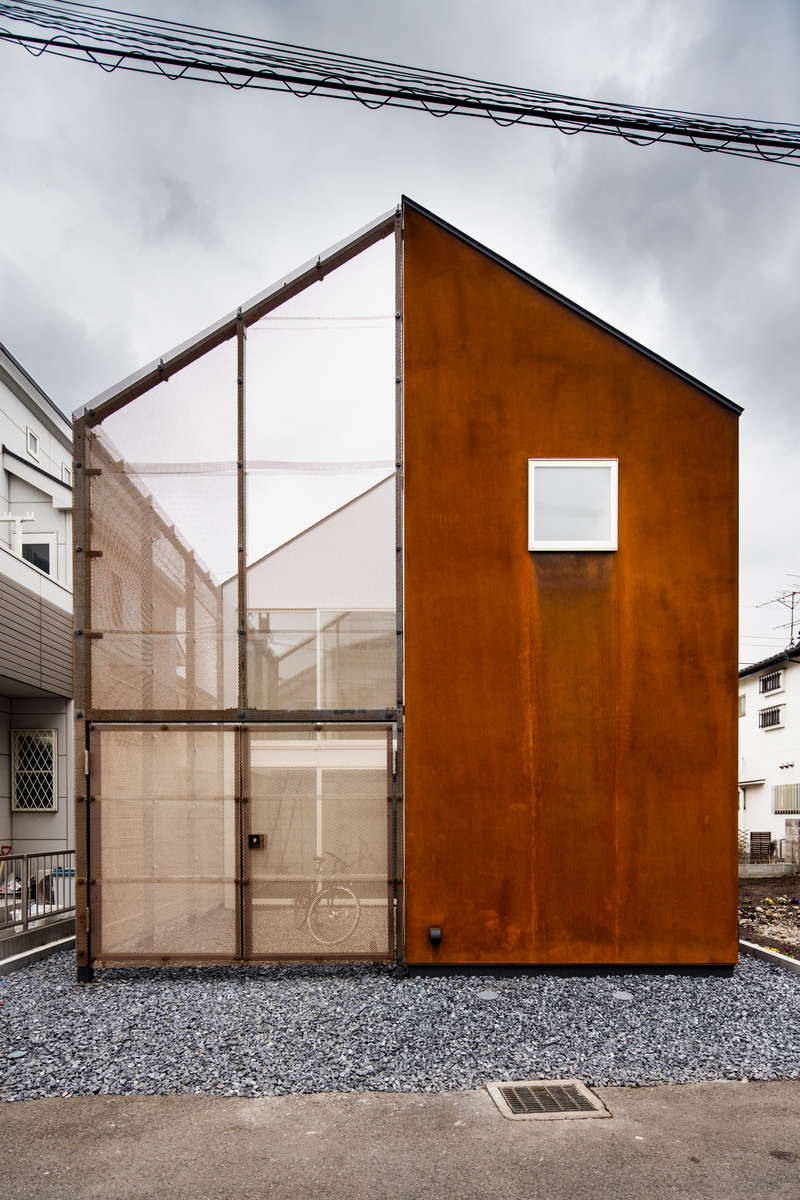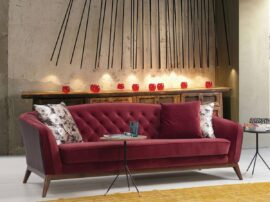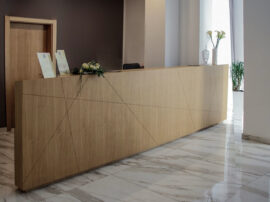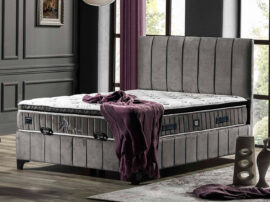In a conventional kindergarten, indoor and outdoor activities are separated, where schoolhouse and the garden are planned individually. In this project, furniture, walls, and playground equipment are distributed inside and outside, carefully designed to create three different gardens with different densities – ‘Garden of Motion’, ‘Garden of Stillness’, and ‘Garden with a Roof’. The three gardens are developed seamlessly on the site, which allows children of different age and body capabilities to coexist, interact, or be separated.
In this project, fundamentals of interior space such as walls, openings, floors are taken apart and reconstructed to create mountain-like walls that emerge from the floor. The mountain-like walls which also could be said as structural walls with openings on the upper half are placed like layers, creating diverse light, colors, spaciousness and relationships between the loosely separated classrooms. The layers are aimed to induce children’s motion by controlling children’s views, where in some places they are blocked, and in some places they are open. Although children’s views range according to its coordinates, the openings on the walls above 1200mm allow the adults’ views to be open at all times as a matter of management.
The exterior environment are planned to become a forest of biodiversity to contribute to the education program, and as they change their expression every season and also during the day, the ceiling reflects and absorbs them to the interior. It is essential to perceive the transitions of natural environment as infants generate and expand their perception. Moreover, by observing the motion of others that reflect on the ceiling, children are granted with choices of where, how, and with whom they play. These opportunities are aimed to encourage children to understand the sense of distance between people and establish their behavior in society.
Variety of gardens expanded indoors and outdoors, stimulates human instincts to search for adequate environment, developing infant perceptions and experiences. The mixture of play that children are provided passively and play that children discover actively, is the very environment to educate infants through experience and creation.
●Floor Planning: Gardens, Classrooms, and a Hall
It is inevitable for kindergarten kids to have a big range of body sizes and capabilities. In order to respond to this, 3 year olds classrooms are faced to the ‘Garden of Stillness’ and older kids use classrooms that are faced to the ‘Garden of Motion’, loosely separating each grades by their different speed and quality of play. On the other hand, a hall planned to connect all the classrooms allows interactions between grades. The hall has a span of 14m, which is realized by a 400×400 cross-frame steel beam.
To realize the mountain-like walls that function as structural walls, traditional angle brace structure is applied. Three types of structural walls are designed according to spans and size of openings and wall lengths, and they are placed well-balanced in order to bear the horizontal force.
Offering experience of natural environment has always been an essential part of Yutaka Kindergarten’s educational program. To support this, ‘a forest of biodiversity’ is proposed, creating transitions of colors and creatures. 45 plant species were planted anew, and they are distributed carefully to design density as well as the playground equipment to create 3 different gardens.
●Environmental Facility: Thermal Environment connecting diversity of play
Thermal environment was designed create no boundary between indoors and outdoors, in order to support diversity of playing activities.
In the intermediate seasons, top-lights, blinds, and eaves are used actively to utilize natural resources such as sunlight and wind, realizing comfortable semi-outdoor space.
In the hottest season, artificial air-conditioning in the central hall is utilized, sending cool air to each class rooms. This is to improve air-conditioning efficiency, as the classrooms are connected to gardens and frequent entrance and exit are inevitable.
In the winter, floor-heating system where concrete foundation performs as thermal storage medium, to provide warmth even with windows opened. Addition to that, air-conditioned central hall sends warm air to each classroom, in order to endure the coldest season.
Project Outline
Project Name: Yutaka Kindergarten
Place: Saitama, Japan
Principal Use: Kindergarten
Client: Yutaka Kindergarten
Number of Stories: +1
Eaves Height: GL+3250mm
Max Height: GL+3770mm
Site Area: 2650.43sqm
Building Area: 812.117sqm
Floor Area: 802.25sqm
Concept Design/Schematic Design/Design Development: SUGAWARADAISUKE (Daisuke Sugawara, Masayuki Harada, Noriyuki Ueakasaka, Hiroshi Narahara)
StructureDesign: OHNO JAPAN
Facility Design: YMO
Planting Design: GA Yamazaki
Scheme of Sign: Masaki Hanahara
Construction:Okaken Koji Co., Ltd.
Structure + Construction
Structure: Foundation: Wooden Post and Beam
Rooms Classroom: Central Hall: Mat Foundation
Rooms
Classroom: 50.57sqm
Central Hall: 108.89sqm
Period
Design: Oct. 2012-Oct. 2013
Construction: Oct. 2013-Apr. 2015(Building completed –Aug. 2014)
